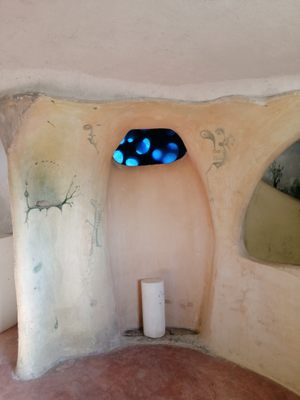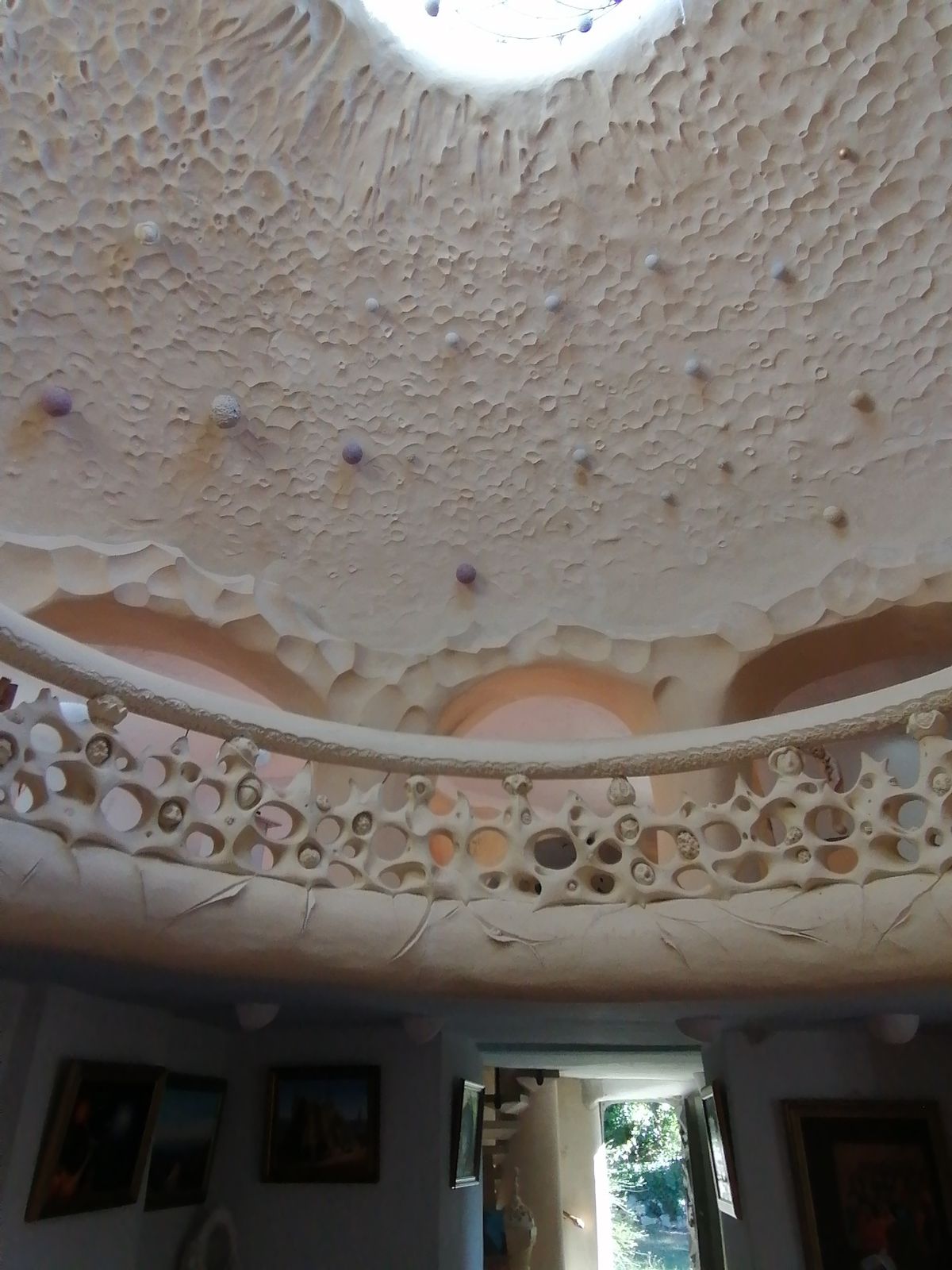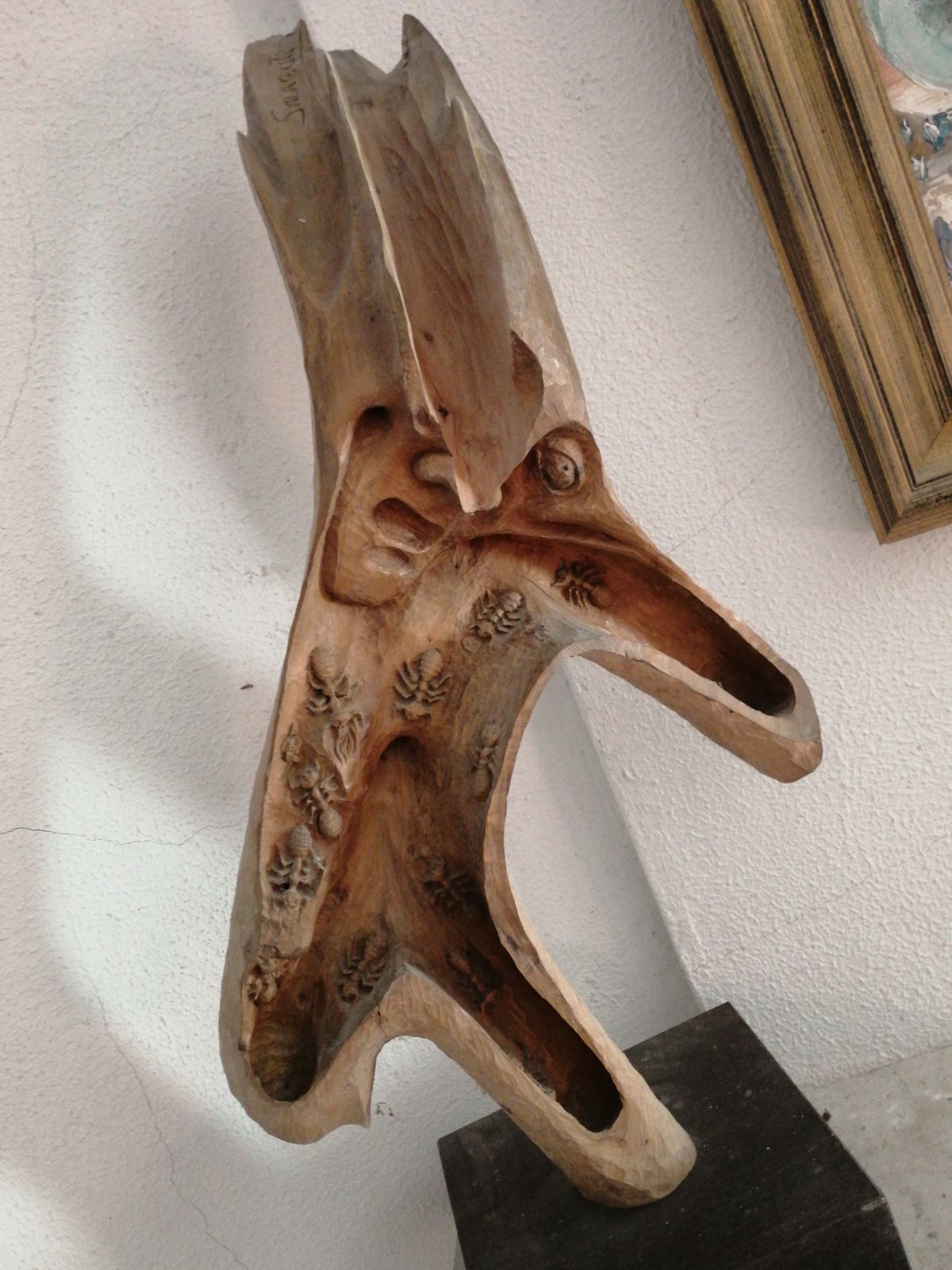About
Some art-school administrators made a huge mistake when they looked over Carlos Salazar Gutiérrez' application and rejected it. Without any formal training and a slight vendetta against the artistic establishment, Gutiérrez began calling himself Salaguti in the 1970s and subsequently created his own live-in museum in Sasamón, Spain.
After achieving a fair amount of success and financial leeway during the 1960s and early 1970s, Salaguti staked out a small plot of land in rural Spain. There, he began work on a project that he wouldn't have to sell, or exhibit for approval. A short walk out of the center of Sasamón, Salaguti made a decision to create a Casa/Museo, that would house him as an artist, and all of his works.
With his inspiration and plan set, he began to translate his ideas to the structure itself. On the exterior, Salaguti began by building a circular, castle-like building made out of concrete. Always with a focus on himself, he worked to sculpt a self-portrait right into the outer walls. As a great statue of Neptune, Salaguti's portrait features a 13-foot high bearded face and two stoic eyes that seem to penetrate the landscape.
Besides the bold relief on the outside of the building, the two-story art museum on the inside holds a place for Salaguti to work and many of his sculptures. He once lived in the museum building, but now lives in small, but unusual, house next door. Despite living alone on the outskirts of a small town, Salaguti welcomes visitors to his property, and the structure is hard to miss. It's the only bubbling concrete building in the area, and it's located prominently on a hillside.
Related Tags
Know Before You Go
Follow the tourist signs and do not give up when they seem to run out. Carry on up the hill and you will find it. If you follow a GPS, it may take you into impossibly narrow streets near the church.
Community Contributors
Added By
Published
December 15, 2011





























































